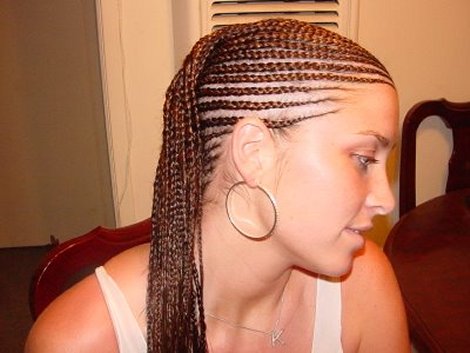Common Causes for Women’s Hair Loss

It is believed that hair loss is strictly men’s problem. However, out of all the people that come across this trouble forty percent are women. It is a normal thing to see a balding man, but women have to hide their baldness because female hair loss is not as accepted by the society as male.
Alopecia is a medical term for hair loss which can be temporary or permanent. When it is temporary, the solution is rather simple: as soon as the factor, causing hair shedding is found and eliminated, the follicles start their normal cycle and hair restores. Although there are different kinds of temporary hair loss, all of them are common in one: shedding hair usually means that there is something else going wrong in person’s body: disease, stress, hormonal imbalance, serious medical treatment, etc. One should remember, such short-term events as taking a certain medication, pregnancy or surgery can cause hair loss.
Permanent hair loss ends with partial or full baldness. Usually the reason for it is a gene that is inherited from parents and makes the person susceptible to pattern baldness. A few decades ago it was thought that male hormone testosterone is responsible for baldness, but several studies showed that dihydrotestosterone (DHT) is the main enemy of hair follicles.
Testosterone, which is present in both men and women to some degree, converts into DHT with the help of some enzymes. The main goal of DHT is to kill hair follicles or make them stop producing healthy hair. Some people’s bodies are very sensitive to minimal hormonal changes; in this case alopecia occurs even when blood test shows normal hormonal balance.
The most common women’s hair loss causes are:
1. Androgenetic alopecia. While in men’s case this kind of hair loss is represented by distinct patterns of baldness, ladies have spread thinning of all areas of the scalp. When the hormonal level is changed, even little amounts of male hormones called androgens become the reason of hair loss. Women can experience this after pregnancy or menopause, while taking birth control pills, or if they have health problems like ovarian cysts.
2. Traction alopecia. Ladies with long hair put it up in various hairstyles which are sometimes too tight for the tender hair to handle. Braiding, cornrows, extensions and even tight ponytails can be the reasons for poor hair condition. If the problem is detected early and the hair receives good care, soon enough hair health becomes restored. However, if the care is not provided and damage is caused over and over, the follicles might become dead or at least stop functioning for a while.
3. Telogen Effluvium. Telogen is the last phase of hair life, the period when it sheds. After serious health changes: surgery, childbirth, severe infection, starvation, and other problems, many hair strands go straight from anagen (growing phase) and catagen (resting phase) to telogen. This process is called telogen effluvium. At this time it is normal to lose hair even by handfuls. This kind of hair loss does not require treatment; the hair gets completely restored within three to four weeks.
4. Anagen Effluvium. It happens when hair strands are affected in their growing period. The best example of anagen effluvium is hair loss after chemotherapy: while cancel cells are prevented from dividing, hair growth stops as well, causing its falling out. At this time a person can lose up to 90% of his or her hair. Fortunately, after some time, follicles start working again, regrowing healthy hair.
Alex Bright
Posted on March 17, 2009
Filed Under Hair Loss, Hair Loss Conditions, Hair Loss News and Statistics, Hair Loss Reasons
Comments
Leave a Reply
